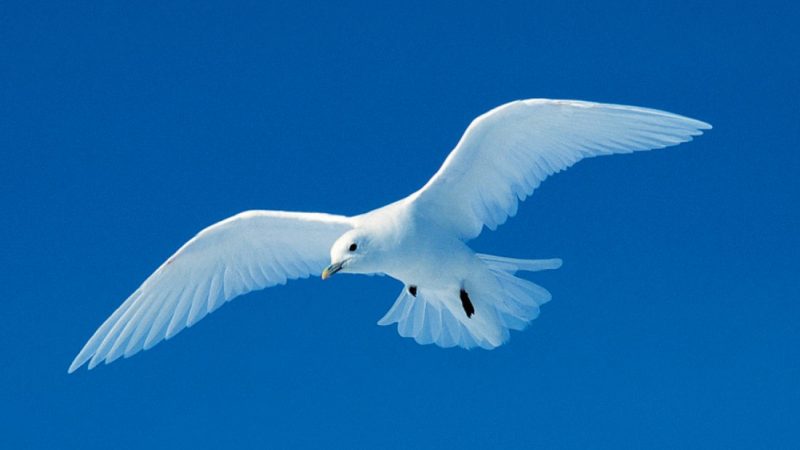The Arctic is a land of ice, snow, and extreme conditions, yet it is home to some of the most fascinating birds on the planet. These birds have adapted in incredible ways to survive freezing temperatures, long migrations, and harsh landscapes. The birds in Arctic region showcase nature’s resilience, from their unique nesting habits to their impressive survival strategies. Whether you’re a bird enthusiast or simply curious about wildlife, these ten stunning facts about Arctic birds will leave you amazed.
The Arctic Tern Has the Longest Migration in the World
The Arctic Tern is a true endurance traveler, covering nearly 50,000 miles annually between the Arctic and Antarctic. This incredible bird experiences two summers each year, enjoying continuous daylight for months at a time. Scientists have tracked their migration routes using GPS technology, revealing that these birds in Arctic region make the longest recorded migration of any species.
Some Arctic Birds Change Color with the Seasons
Certain Arctic birds, like the Rock Ptarmigan, have an extraordinary ability to change their plumage based on the season. In summer, their brown and gray feathers help them blend in with the tundra, while in winter, they turn completely white to camouflage against the snow. This adaptive strategy helps them evade predators like foxes and raptors, making them one of the most well-adapted birds in Arctic region.
Snowy Owls Can Detect Prey Under Snow
Snowy Owls, one of the most iconic birds in Arctic region, have extraordinary hearing abilities. They can detect the movement of small mammals, such as lemmings, even under thick layers of snow. Their powerful talons and keen eyesight make them formidable hunters, and their populations fluctuate depending on lemming availability. A single Snowy Owl can consume more than 1,600 lemmings in a year!
Puffins Use Their Beaks Like Built-in Grocery Bags
Atlantic Puffins, often called the “clowns of the Arctic” due to their colorful beaks, have a special adaptation that allows them to catch and carry multiple fish at once. Their beaks have spiny ridges that help grip the fish, enabling them to bring back several at a time to feed their chicks. This feeding technique is crucial for survival in the harsh Arctic environment, where food sources can be scarce.
Ivory Gulls Depend on Polar Bears for Food
One of the most interesting relationships among birds in Arctic region is that between the Ivory Gull and the polar bear. These gulls rely on polar bears to provide them with food scraps from seal carcasses. Since the Ivory Gull is a scavenger, it benefits from the bears’ hunting efforts. However, as climate change affects polar bear populations, the Ivory Gull’s food sources are also at risk.
Gyrfalcons Are the Largest Falcons in the World
The Gyrfalcon is a powerful raptor that dominates the Arctic skies. As the largest falcon species, it has incredible speed and agility, allowing it to hunt birds like ptarmigans with precision. Unlike many falcons, Gyrfalcons do not build their own nests but instead take over abandoned nests from other birds. These birds in Arctic region are a top predator in their ecosystem and symbolize strength and adaptability.
The Common Eider Produces the World’s Warmest Down Feathers
The Common Eider, a sea duck found in the Arctic, has some of the warmest and softest feathers in the world. These birds pluck their own down to line their nests, creating a warm and insulated environment for their eggs. Humans have long collected eider down for use in luxury bedding and clothing. Despite their commercial value, these birds in Arctic region continue to thrive thanks to sustainable harvesting practices.
Some Arctic Birds Sleep While Flying
Certain seabirds, such as the Northern Fulmar, have been observed sleeping while gliding over the ocean. This ability allows them to rest while remaining in motion, reducing the risk of predation. Scientists believe that these birds in Arctic region use one hemisphere of their brain at a time to sleep, similar to dolphins. This adaptation is particularly useful during long migrations over open water.
Arctic Birds Help Scientists Study Climate Change
Researchers closely monitor Arctic birds to understand how climate change is affecting the region. Changes in migration patterns, breeding seasons, and food availability all provide valuable insights into environmental shifts. For example, the declining population of the Ivory Gull is linked to melting ice and pollution. Studying these birds in Arctic region helps scientists predict future climate trends.
Some Arctic Birds Are Ancient Species
Many birds in Arctic region have existed for millions of years, with fossil evidence showing that some species date back to prehistoric times. The Thick-billed Murre, for instance, has evolved very little over time and still retains many of its ancient adaptations. These birds serve as living reminders of the Arctic’s rich evolutionary history and resilience in the face of environmental challenges.
Conclusion
The birds in Arctic region are some of the most extraordinary creatures on Earth. From their impressive migrations and survival tactics to their crucial role in the Arctic ecosystem, these birds showcase nature’s brilliance. As climate change continues to impact their habitats, it’s more important than ever to protect these incredible species. Whether you’re a casual birdwatcher or an avid wildlife enthusiast, the Arctic offers a treasure trove of avian wonders waiting to be discovered.
FAQs
Q1. Why do Arctic birds migrate such long distances?
Many birds in Arctic region migrate to escape the harsh winter conditions and find abundant food sources in warmer climates. Some travel thousands of miles annually.
Q2. How do Arctic birds stay warm in freezing temperatures?
Arctic birds have thick layers of feathers, high metabolic rates, and some even grow extra down for insulation during the winter.
Q3. Which Arctic bird has the longest migration?
The Arctic Tern holds the record for the longest migration, traveling nearly 50,000 miles between the Arctic and Antarctic every year.
Q4. How do scientists track Arctic bird migrations?
Researchers use GPS tracking devices, bird banding, and satellite imaging to study the migration patterns of birds in Arctic region.
Q5. Are Arctic bird populations at risk due to climate change?
Yes, climate change affects food availability, nesting sites, and migration patterns, putting many birds in Arctic region at risk of population decline.
ALSO READ: Pousada Caiman: 10 Luxurious Amenities That Set Us Apart









